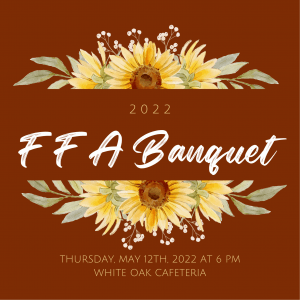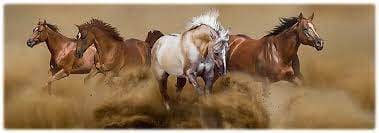
Week of April 11th
Goal: To learn the events and procedures associated with parturition in horses.
Description: After watching the program, you will be able to recognize the signs of a mare beginning labor, to tell if delivery is progressing normally, and to know when either to help with the delivery or to call the veterinarian. You will also gain a better understanding of foaling problems such as maternal and fetal dystocia. Delivery and care of the foal are shown in vivid detail.
Objectives:
1. To learn basic care and treatment of mares during gestation.
2. To learn the three stages of foaling and how to identify them.
3. To learn to identify dystocia and assist with difficult deliveries.
4. To learn basic techniques used to care for the newborn foal.
Week of March 21st
Goal: To explore the history and characteristics of some of the most popular light breeds in the United States.
Description: What breed claims to be the “most popular horse in the world”? Have you ever seen the lateral gait of a Paso Fino? Horse enthusiasts get ready for the ride of your life as you explore the history, characteristics, and development of more than 20 light horse breeds and color patterns. You will see the following breeds: Akhal Tekke, American Bashkir Curly, American Saddlebred, Appaloosa, Arabian, Barb Mustang, Cayuse Indian Pony, Kiger Mustang, Lippizan, Morgan, National Show Horse, Paint, Palomino, Paso Fino, Peruvian Paso, Pinto, Quarter Horse, Rocky Mountain Horse, Spanish Barb Mustang, Standardbred, Tennessee Walking Horse and Thoroughbred.
Week of March 7th – Thoroughbred Racing Unit
Finish Secretariat.
Watch ESPN special over his life.
Virtual Field Trip to Thoroughbred Farm
Description: Located on 1,000 acres in Kentucky, the family owned and run Taylor Made Farm is the home of Unbridled’s Song, one of the most impressive racehorses of the last decade, with a standing stud fee of $30,000 on a live foal. Visit the mare and foal complex where the Taylor family creates a stress-free environment and the yearling complex where horses are prepared for sale. Watch horses “work out” on the specialized automatic walker and treadmill and see a round pen demonstration using the “Advance and Retreat” method. Then, hear about the Thoroughbred Intern Program open to young people who want to pursue a career in the thoroughbred industry. An outstanding field trip for any equine enthusiast.
Week of February 28th
Anatomy Unit – Continued
Goal: To gain a basic understanding of equine anatomy and body systems.
Description: Information on the equine anatomy includes external parts of the horse, external and internal parts of the hoof and parts of the horse’s mouth. Additionally, body systems are discussed and include the circulatory, respiratory, digestive, endocrine, immune, integumentary, nervous, skeletal, muscular and reproductive systems.
Objectives:
1. To describe the anatomy and physiology of horses including the anatomical parts of the horse, hooves and mouth.
2. To describe the circulatory, respiratory, digestive, endocrine, immune, integumentary, nervous, skeletal, muscular and reproductive systems of horses.
Week of February 21st
Start Anatomy Unit
Goal: To gain a basic understanding of equine anatomy and body systems.
Description: Information on the equine anatomy includes external parts of the horse, external and internal parts of the hoof and parts of the horse’s mouth. Additionally, body systems are discussed and include the circulatory, respiratory, digestive, endocrine, immune, integumentary, nervous, skeletal, muscular and reproductive systems.
Objectives:
1. To describe the anatomy and physiology of horses including the anatomical parts of the horse, hooves and mouth.
2. To describe the circulatory, respiratory, digestive, endocrine, immune, integumentary, nervous, skeletal, muscular and reproductive systems of horses.
Grooming & Saddling
Goal: To learn grooming and saddling techniques.
Description: Learn proper daily grooming techniques, tail care, clipping procedures and instructions on how to pick your horse’s feet. Listen to an equine specialist discuss the difference in tack and equipment for varied equine programs. Snaffle bits, curd bits, headstalls and reins are discussed. View the safe and correct way to saddle and bridle your horse as shown by an expert.
Objectives:
1. To understand principal horse care and management practices.
2. To demonstrate basic horse grooming practices.
3. To identify equine tack and equipment.
4. To demonstrate how to saddle and bridle horses.
Week of February 7th – Continue Equine Psychology & Behavior Unit
Goal: To learn the psychology and handling of a horse.
Description: What is the safest way to tie your horse? What is fight or flight? How does it relate to your horse? In the presentation, an equine expert discusses the principles helping with everyday equine management practices. Learn the correct methods for catching, haltering, tying, grooming, leading and handling your horse. Proper housing, transportation techniques, basic terminology used in the equine industry and parts of the horse are discussed and illustrated. Additionally, equine specialists delve into the psychology of the horse.
Objectives:
1. To understand principal horse care and management practices.
2. To identify the correct parts and basic psychology of horses.
3. To learn basic catching, tying and handling practices.
4. To understand proper housing needs and transportation methods.
Week of January 31st – Equine Psychology & Handling
Goal: To learn the psychology and handling of a horse.
Description: What is the safest way to tie your horse? What is fight or flight? How does it relate to your horse? In the presentation, an equine expert discusses the principles helping with everyday equine management practices. Learn the correct methods for catching, haltering, tying, grooming, leading and handling your horse. Proper housing, transportation techniques, basic terminology used in the equine industry and parts of the horse are discussed and illustrated. Additionally, equine specialists delve into the psychology of the horse.
Objectives: 1. To understand principal horse care and management practices. 2. To identify the correct parts and basic psychology of horses. 3. To learn basic catching, tying and handling practices. 4. To understand proper housing needs and transportation methods.
January 24th – Western Horsemanship –
Goal: To define and illustrate how to effectively judge the western horsemanship class.
Description: This hybrid presentation details all factors used to evaluate the western horsemanship class. A collegiate-level equestrian team head coach explains how to evaluate the correct western horsemanship riding position while also exhibiting various penalties to demonstrate how each should be judged. Excellent instructional tool for students who are learning how to judge or for those who are planning to show their horses in the western horsemanship class.
Objectives:
1. To understand the rules and standards which are considered important criteria for judging the Western Horsemanship class.
2. To recognize the three (3) point, five (5) point and ten (10) point penalties and disqualifications which affect the placing of the Western Horsemanship class.
